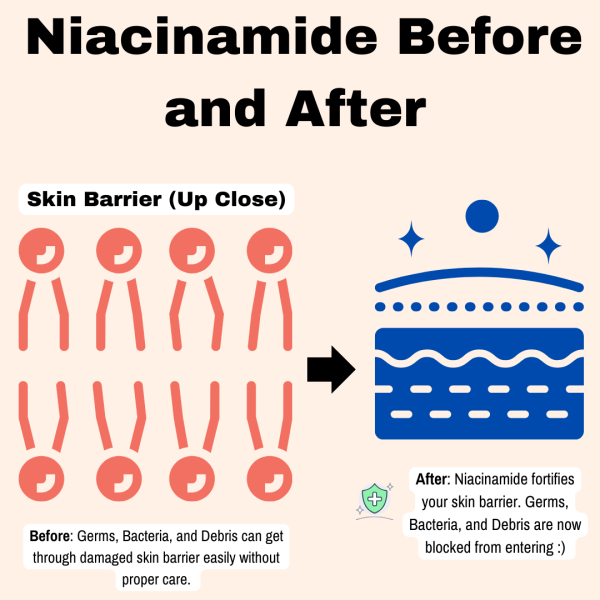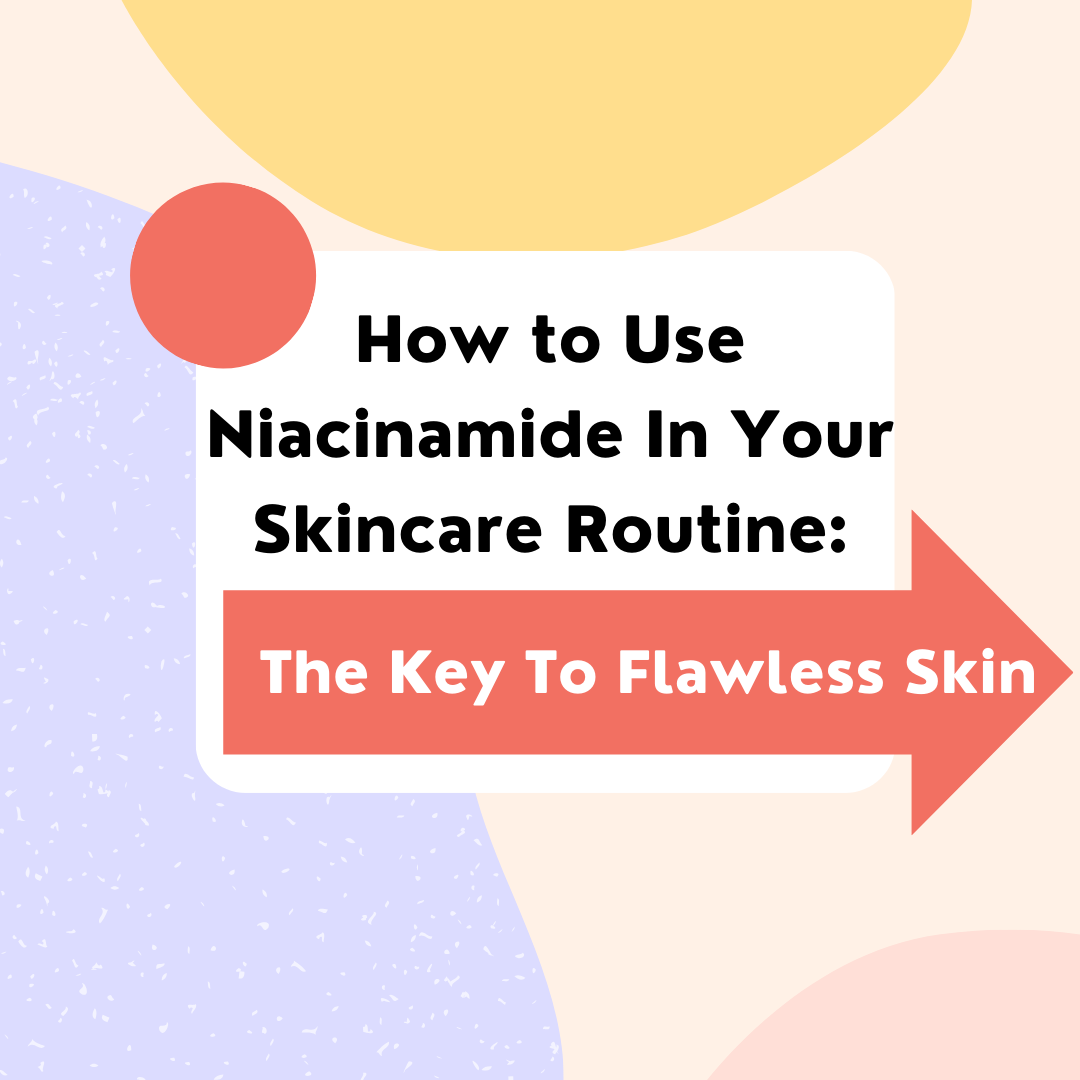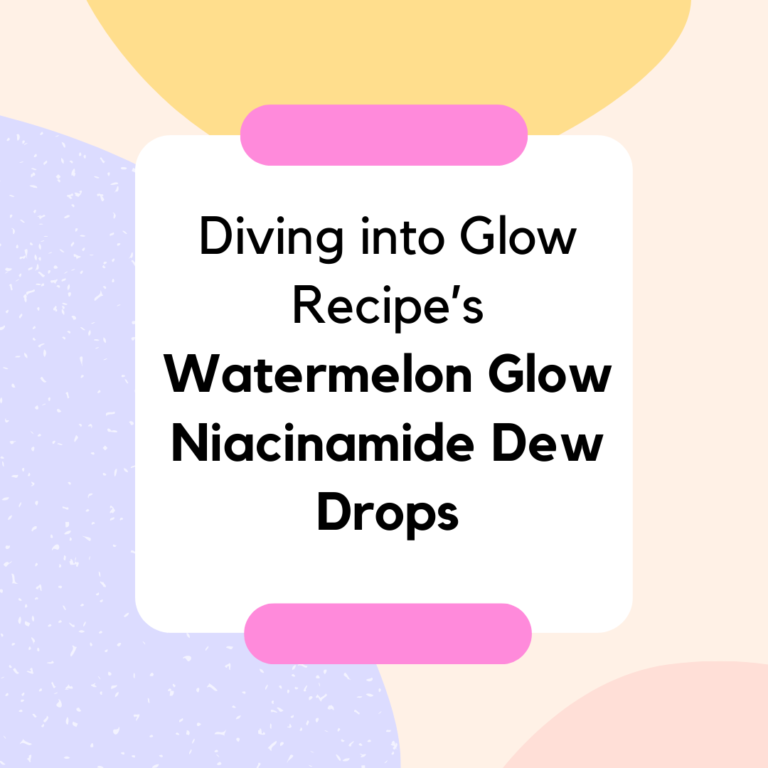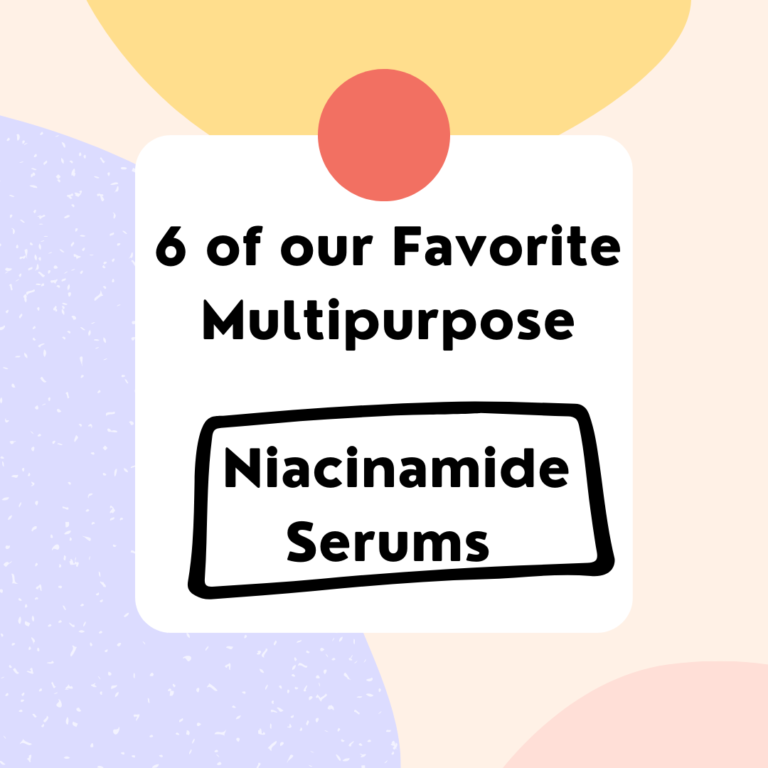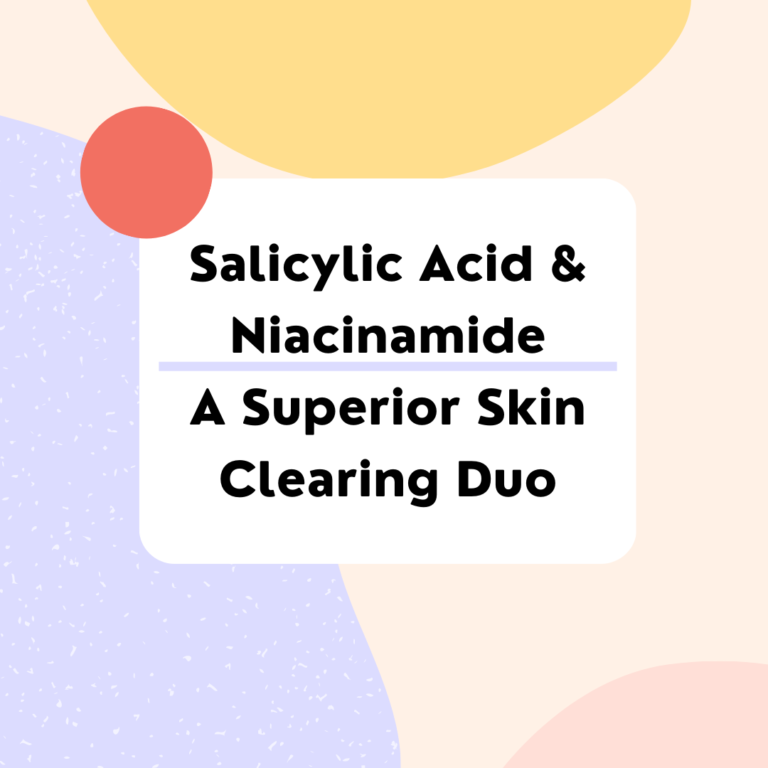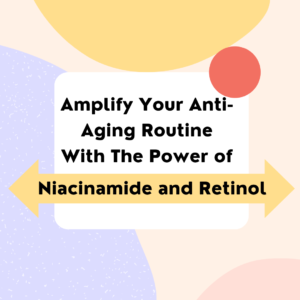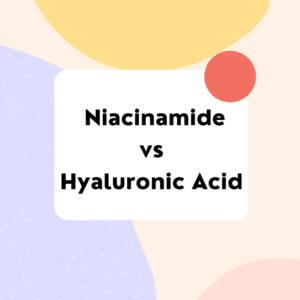Get ready because we’re about to teach you how to use niacinamide. This ingredient is no new kid on the block as its recent resurgence in popularity might suggest. The antioxidant we love has been a secret weapon of many skincare-junkies and professionals for many years. The secret’s out, so we want to make sure you’re armed with plenty of information so you can begin using our beloved skincare sweetheart.
Table of Contents
ToggleHow to Use Niacinamide: Overview
Niacinamide at its most basic level is a type of vitamin that is found in the body and is used to support healthy hair, skin, and nails. It has been shown to strengthen the skin barrier, reduce redness, improve skin texture, and shrink pores.
This hardcore antioxidant fights acne by reducing oil production, reducing redness, and even minimizing hyperpigmentation associated with acne.
Aside from supporting a healthy appearance, this vitamin is also vital to maintaining healthy cells and regulating the processing of fats and sugars we consume. It is a type of vitamin B3 among the 8 other B vitamins.
The 8 types of B vitamins are:
- thiamin (vitamin B1)
- riboflavin (vitamin B2)
- niacin (vitamin B3)
- pantothenic acid (vitamin B5)
- pyridoxine (vitamin B6)
- biotin (vitamin B7)
- folate “folic acid” (vitamin B9)
- cyanocobalamin (vitamin B12)
- You may notice that the basic vitamin B3, as we know it, is called Niacin. Although they may appear similar, Niacinamide and Niacin are not the same thing.
Niacin vs Niacinamide
Niacin is a basic vitamin which is essential to the maintenance of healthy cells and the functioning of sugar and fats in the body. Niacinamide production occurs when an excess of Niacin is found in the body. Niacin (also known as nicotinamide and nicotinic acid), when in excess, is converted to the ingredient we can use on our skin. Niacin primarily comes from when our bodies naturally convert an amino acid called “Tryptophan” into nicotinamide. You can get your necessary amount of vitamin B3 from many different forms of multivitamins and supplements which are widely available and accessible.
Niacinamide Hair Care
Aside from skincare, niacinamide hair care also exists because of this ingredient’s circulation boosting properties. Vitamin B3 also promotes hair growth and strengthens hair follicles. You can most commonly find shampoo with niacinamide if you want to use vitamin b3 in your haircare routine as well. Niacin helps improve your overall appearance by aiding in the production of Keratin, a vital protein that supports healthy hair, skin, and nails. This is why it’s so beneficial to learn how to use niacinamide so you can reap these benefits!
Niacinamide Before and After: Benefits to Expect
Vitamin B3 is hailed as one of the top ingredients in the eyes of most skincare professionals for good reason! For starters, this super-vitamin can help jumpstart collagen production, strengthen your skin, and even help your skin retain moisture.
1. Repairs the skin’s natural barrier
Right under the surface of your skin lies a barrier that is one of the first lines of protection and filtration against anything that comes in contact with your skin. This layer contains what is known as “epidermal surface lipids” which help to fill space between the cells in the skin’s barrier to help add protection. In the lipid layer you can find a mix of ceramides, cholesterol, fatty acids.
Environmental stressors like bacteria, pollutants, allergens, and sun exposure wear on the lipid barrier, weakening it over time. Niacinamide comes to the rescue by strengthening this lipid barrier and supporting/accelerating ceramide production. Over time the niacinamide will make the skin less susceptible to stressors that can cause aging and even sickness!
2. Fights off acne
Acne flare-ups are often accompanied by scarring, redness, and extreme irritation. Years of battling acne can wreak havoc on skin texture. In the short term, niacinamide helps to soothe irritated skin, reduce redness, and lessen lesions and breakouts. By repairing the skin’s lipid barrier and properly regulating moisture and oils on the skin, niacinamide helps your face maintain a balance that gives it an environment to heal and ward off acne causing bacteria.
Over time, niacinamide can greatly improve skin texture by supporting cellular turnover, fading acne scars, and leaving you with smoother, brighter skin. All around this active ingredient helps to reduce short term effects while also healing the skin and repairing skin damage caused by acne.
3. Anti-Aging Properties
Due to the ability of niacinamide to repair the skin barrier, it protects the skin from signs of aging. Certain factors like sun damage, pollution, and bacteria all wreak havoc on the skin and cause poor moisture retention, accelerating visible signs of aging like wrinkles and fine lines. Niacinamide helps lock in moisture and strengthen the skin to hold up better against environmental stressors, giving you an enviable long-lasting youthful glow.
4. Niacinamide Before and After : Hyperpigmentation Results
Does niacinamide help with hyperpigmentation? It most certainly does! Research supports that vitamin b3, in concentrations 5% and greater, can lighten dark spots. The lightening of dark spots is uniform and can help even out your skin tone and repair areas of discoloration. You will notice the effectiveness of niacinamide for hyperpigmentation over time due to its ability to increase cell turnover and collagen production in the skin. These benefits can be seen in as little as 4 weeks, but not extending past 2 months of usage.
5. Reduces visible pores
As this powerful ingredient strengthens the lipid bilayer, when comparing your face on niacinamide before and after, you can expect to see visibly smaller pores. This is because the skin is becoming more resilient and less permeable. Large pores are usually a result of sensitivity in the skin due to an unbalanced environment which leads to the production of excess oils that fill and expand your pores.
Niacinamide reduces skin’s overall sensitivity and fills gaps in the protective layer of your skin, thus leading to visibly smaller and less permeable pores. The reduction in pore size can also be attributed to niacinamide’s regulation in sebaceous oils.
Niacinamide skincare
Vitamin B3 is very popular in the skincare world! Recently it has been trending due to the astounding results users experience in their complexion when using niacinamide before and after. You can find niacinamide in serums, moisturizers, lotions, face masks, and specially formulated facial treatments. Typically, serums and moisturizers contain lower concentrations from 2-6%. We found that a product with niacinamide 5 percent concentration is the most beneficial with the least potential to experience side effects. Higher formulations range from 7-20% and promise more drastic results sooner, with a higher chance of irritation if you have sensitive skin.
How to Use Niacinamide in your skincare routine
When developing your skincare routine, you must ensure you aren’t using too many products that contain this ingredient because your potential for skin irritation can increase. Luckily, most brands today know how to use niacinamide in safe percentages to provide a properly balanced formula for you, but it’s important to read the label! Choose one product containing 2-6% concentration to start and find complimentary ingredients to boost its benefits. Look for ingredients that pair well with niacinamide like hyaluronic acid, retinol, glycolic acid, vitamin C, and ceramides.
Also, feel free to explore and incorporate higher concentrations after incorporating niacinamide into your routine consistently for a few weeks. Waiting to try out higher concentrations gives you a chance to gauge your skin with niacinamide before and after to see if there’s a difference in your normal sensitivity.
How to Use Niacinamide Serums, Moisturizers, and Toners
If you are using a niacinamide serum, use directly after your cleanser and toner (if you use one) to maximize absorption. Niacinamide moisturizers should be used after cleansing, toning, and any serums. If you’re ever in question, apply your products depending on their viscosity (thickness) and weight. Lighter-weight, more water like products are applied first with thicker lotions applied last.
Recap
Vitamin b3 is a very powerful skincare ingredient that can be used for many different reasons. Some notable benefits of this wonderful ingredient include repairing your skin barrier, fighting off acne, preventing signs of premature aging, reducing hyperpigmentation, and reducing pore size.
When first learning how to use niacinamide in your current routine, look for products with concentrations of 2-6%. Always make sure to apply serum products after cleansing and hydrating, and apply moisturizers last, basically apply products from thinnest (most watery) to thickest consistencies (think creams and lotions).
